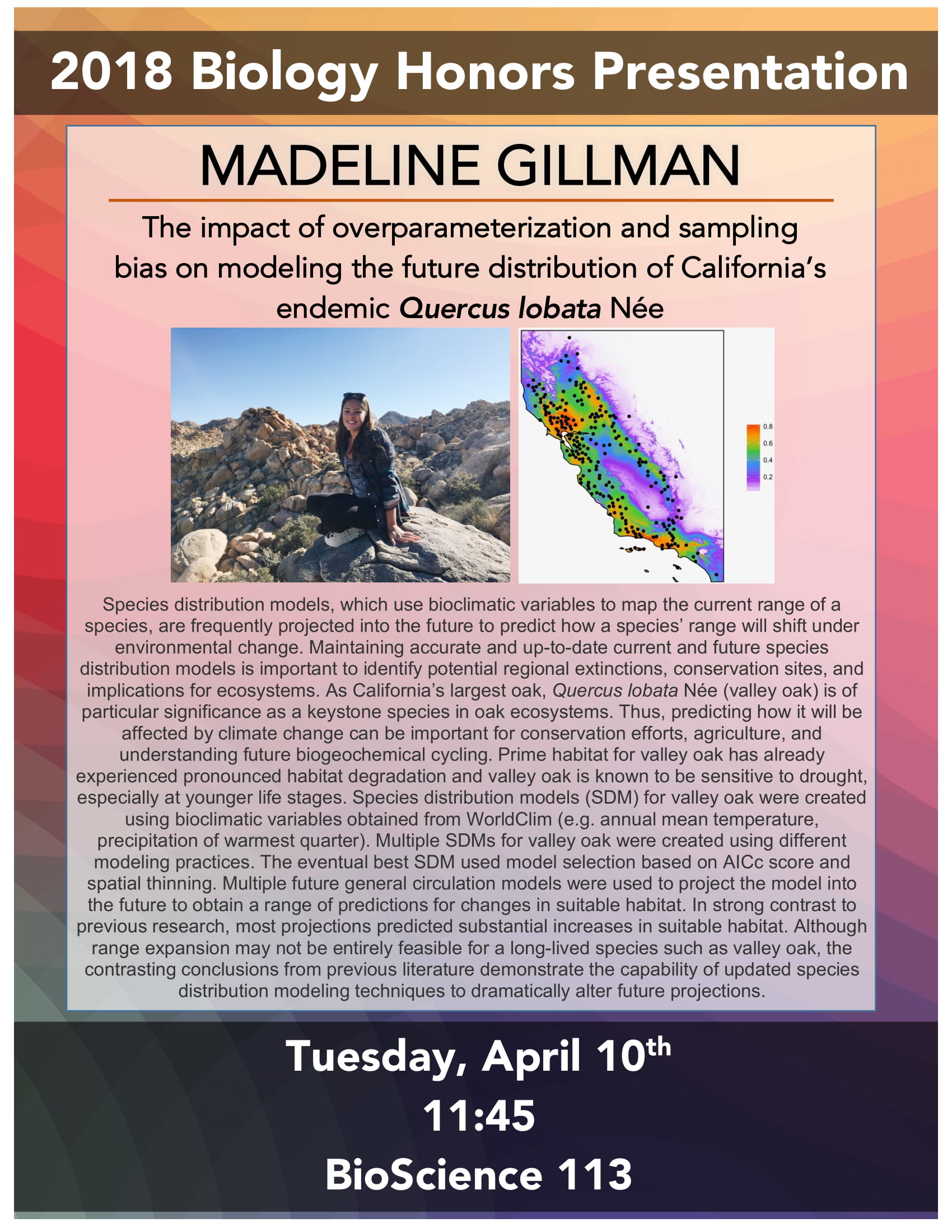
Species distribution models, which use bioclimatic variables to map the current range of a species, are frequently projected into the future to predict how a species’ range will shift under environmental change. Maintaining accurate and up-to-date current and future species distribution models is important to identify potential regional extinctions, conservation sites, and implications for ecosystems. As California’s largest oak, Quercus lobata Née (valley oak) is of particular significance as a keystone species in oak ecosystems. Thus, predicting how it will be affected by climate change can be important for conservation efforts, agriculture, and understanding future biogeochemical cycling. Prime habitat for valley oak has already experienced pronounced habitat degradation and valley oak is known to be sensitive to drought, especially at younger life stages. Species distribution models (SDM) for valley oak were created using bioclimatic variables obtained from WorldClim (e.g. annual mean temperature, precipitation of warmest quarter). Multiple SDMs for valley oak were created using different modeling practices. The eventual best SDM used model selection based on AICc score and spatial thinning. Multiple future general circulation models were used to project the model into the future to obtain a range of predictions for changes in suitable habitat. In strong contrast to previous research, most projections predicted substantial increases in suitable habitat. Although range expansion may not be entirely feasible for a long-lived species such as valley oak, the contrasting conclusions from previous literature demonstrate the capability of updated species distribution modeling techniques to dramatically alter future projections.
Tuesday, April 10th
11:45
BioScience 113
p.p1 {margin: 0.0px 0.0px 0.0px 0.0px; font: 12.0px 'Helvetica Neue'; color: #454545} p.p2 {margin: 0.0px 0.0px 0.0px 0.0px; font: 12.0px 'Helvetica Neue'; color: #454545; min-height: 14.0px}
